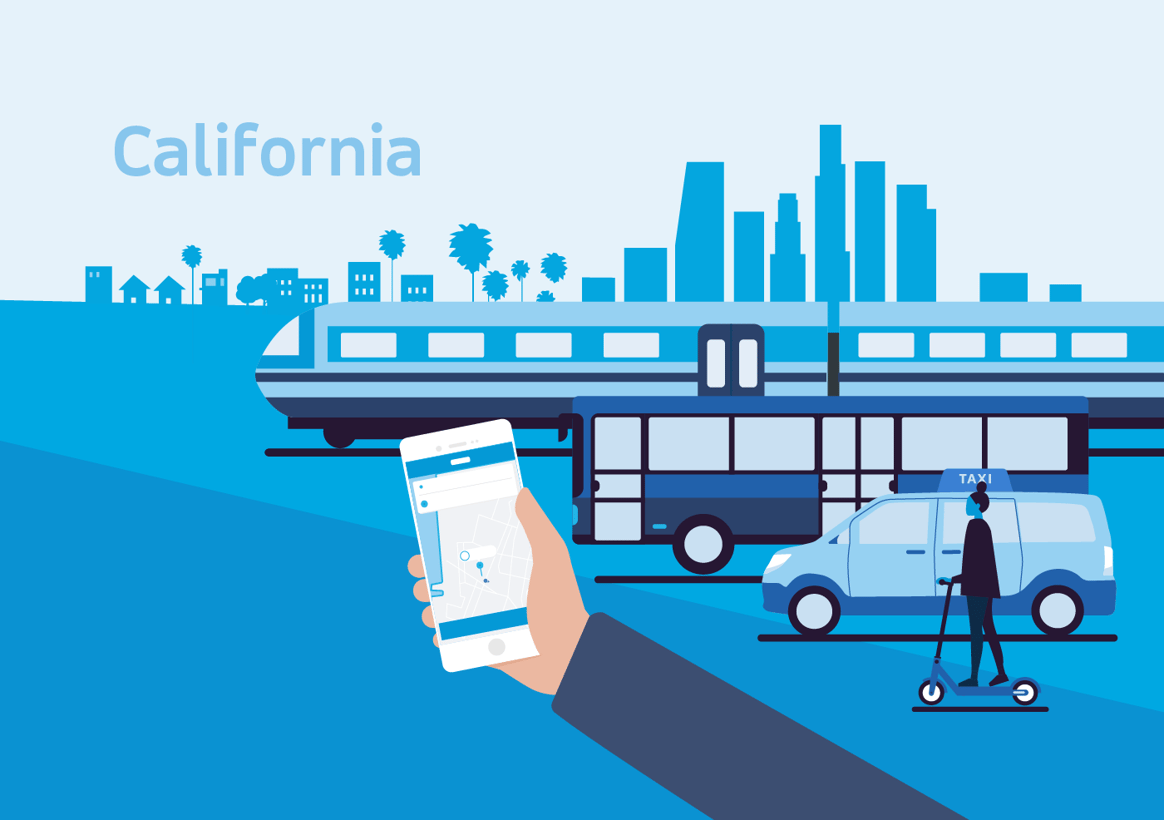Need a primer on some of the terms used below? Check out our new glossary for all of the TransitTech definitions you could ever need -- and then some.
Microtransit is transforming public mobility. California now leads the nation with the highest number of microtransit services — which is not surprising, given the state’s progressive focus on improving equity and reducing emissions in transit.
Despite Frost & Sullivan predicting that microtransit shuttles will account for 50% of the shared mobility market by 2030, financing them is one of the biggest hurdles. Over the last few years, cities and transit agencies in California have developed a number of ways to fund projects.
First, a little background: Funding for public transportation is highly localized — a combination of local and state taxes, regulatory fees, bonds, federal funding, and fare revenue. Historically, federal funding has focused on capital expenditures like purchasing buses or constructing subway stations.
That’s one main reason most California cities and transit agencies use state and local sources of revenue to fund on-demand microtransit, which is characterized by very light capital costs and therefore often requires funding that can be spent more flexibly. As policies at all levels of government continue to evolve to account for innovative transit and its benefits, the pool of available resources will almost certainly grow over time.
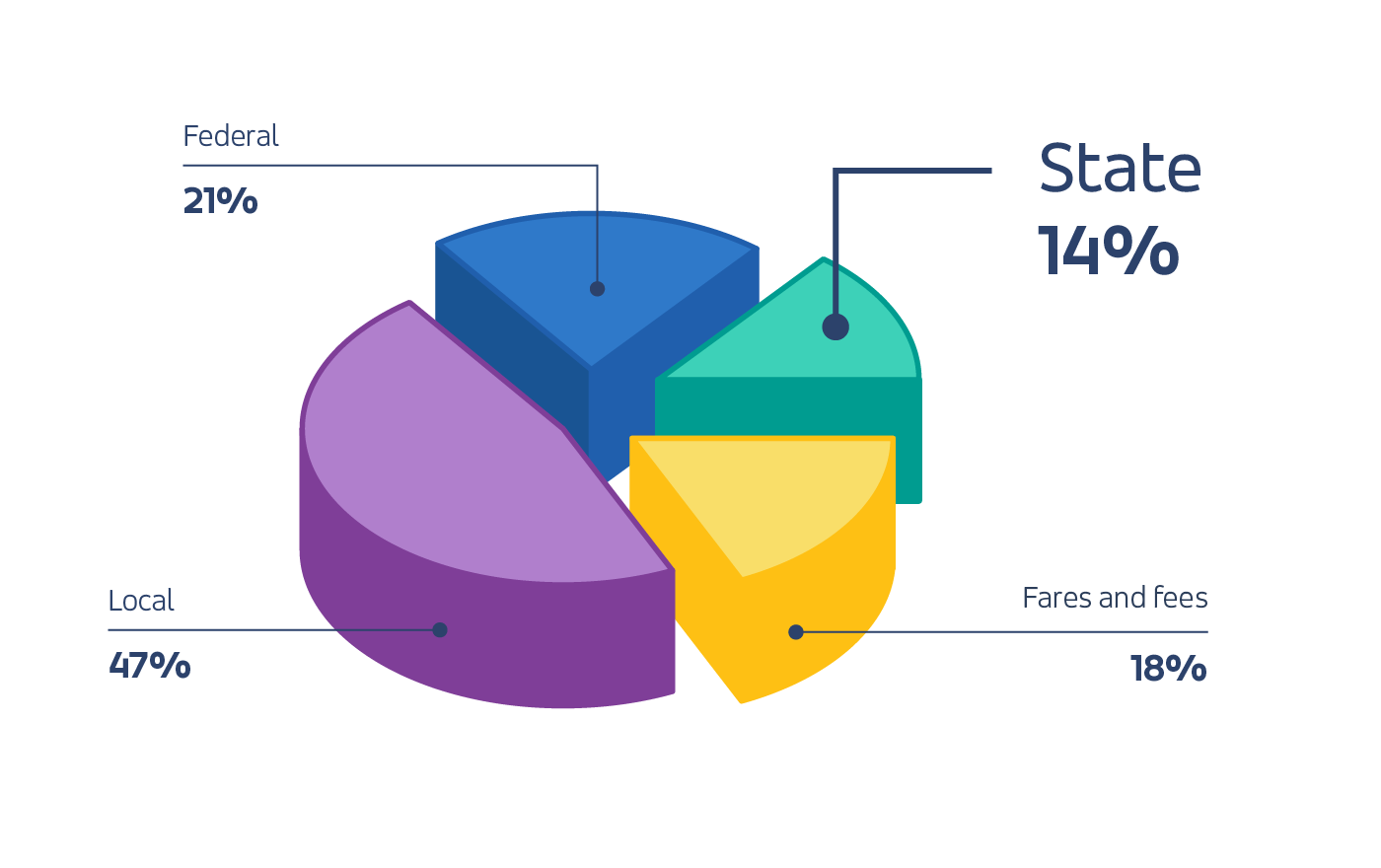
How state and regional funding comes into play.
Approximately 14% of transit is funded through state funding in California . State funding is primarily from Cap and Trade auction proceeds, general sales tax, and the diesel fuel sales tax. Cites and transit agencies across California are using a variety of ways to fund microtransit using state funds, including:
State formula funding.
Through the Transportation Development Act (TDA), two types of state funding are distributed through California’s Department of Transportation’s Division of Rail and Mass Transit: the Local Transportation Fund (LTF), and the State Transit Assistance (STA) fund.
There are also designated TDA funds to efficiently and cost-effectively improve the quality of transportation services to groups with limited mobility (those who are transit dependent and/or require paratransit/ADA services) through the Social Services Transportation Improvement Act, which created Consolidated Transportation Services Agencies (CTSAs). Funding for CTSAs flows through the local planning agency (MPO/RTA), which designates the receiving agencies.
While it can be challenging to use TDA funds because they have typically been used for traditional transit, some agencies and cities have done so successfully. In 2018, West Sacramento used TDA funds for its on-demand microtransit service , and they’ve proven to be a sustainable source of funding three years later and after considerable service expansions.
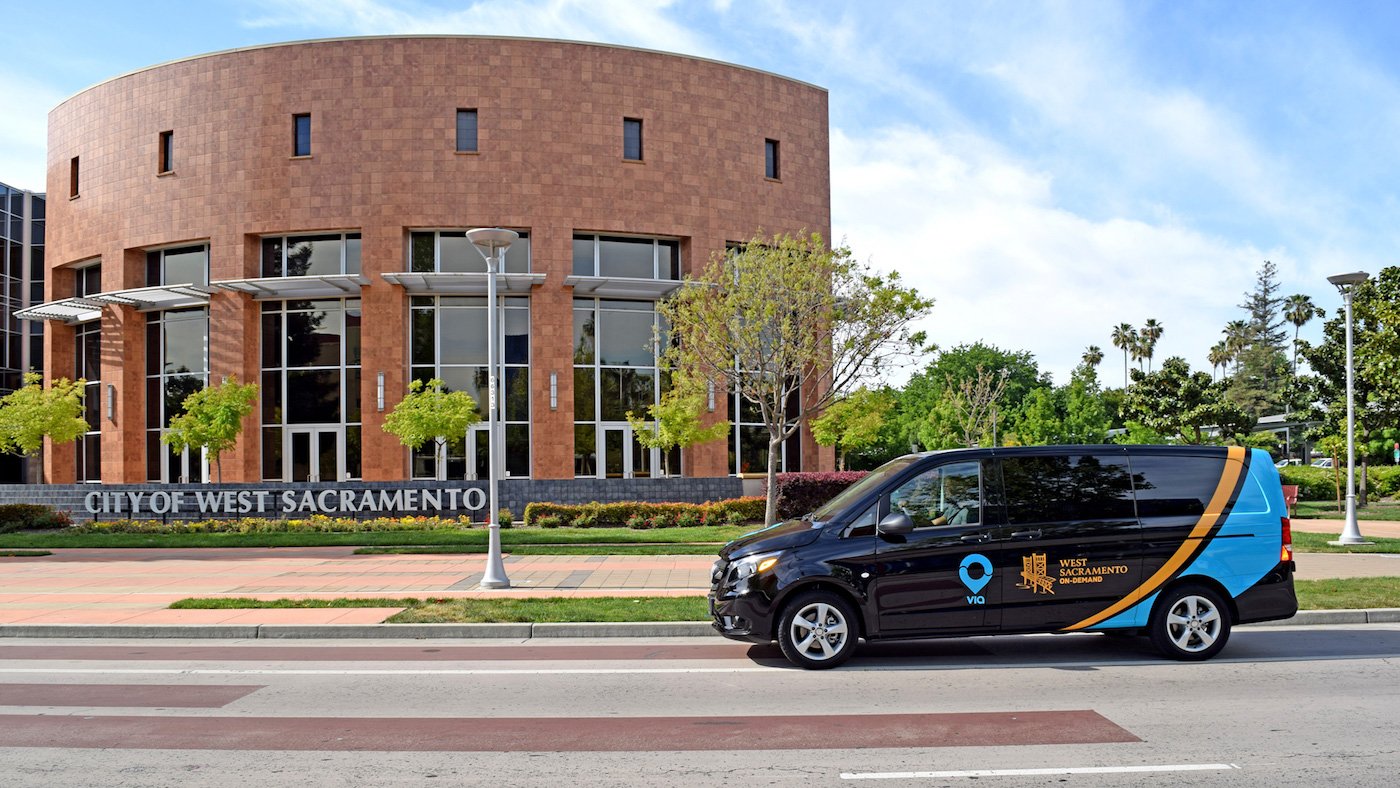
State transportation grants.
California offers transportation grants focused on policy objectives that range from reducing greenhouse gas emissions to increasing equity. In all cases, a proposal to deploy microtransit can make for a compelling application, as it is directly in line with the state’s priorities. California’s Cap-and-Trade auction proceeds fund a number of programs that provide grants for innovative, sustainable, and equitable transit. These include:
- $17M in grants for Clean Mobility Options from the California Air Resources Board (ARB), a program administered by CALSTART and Shared-Use Mobility Center (SUMC)
- $22M for the Sustainable Transportation Equity Project (STEP) from the California Air Resources Board
- $146M in funding for the Low Carbon Transit Operations Program (LCTOP) and the State of Good Repair Grants (SGR) from CalTrans
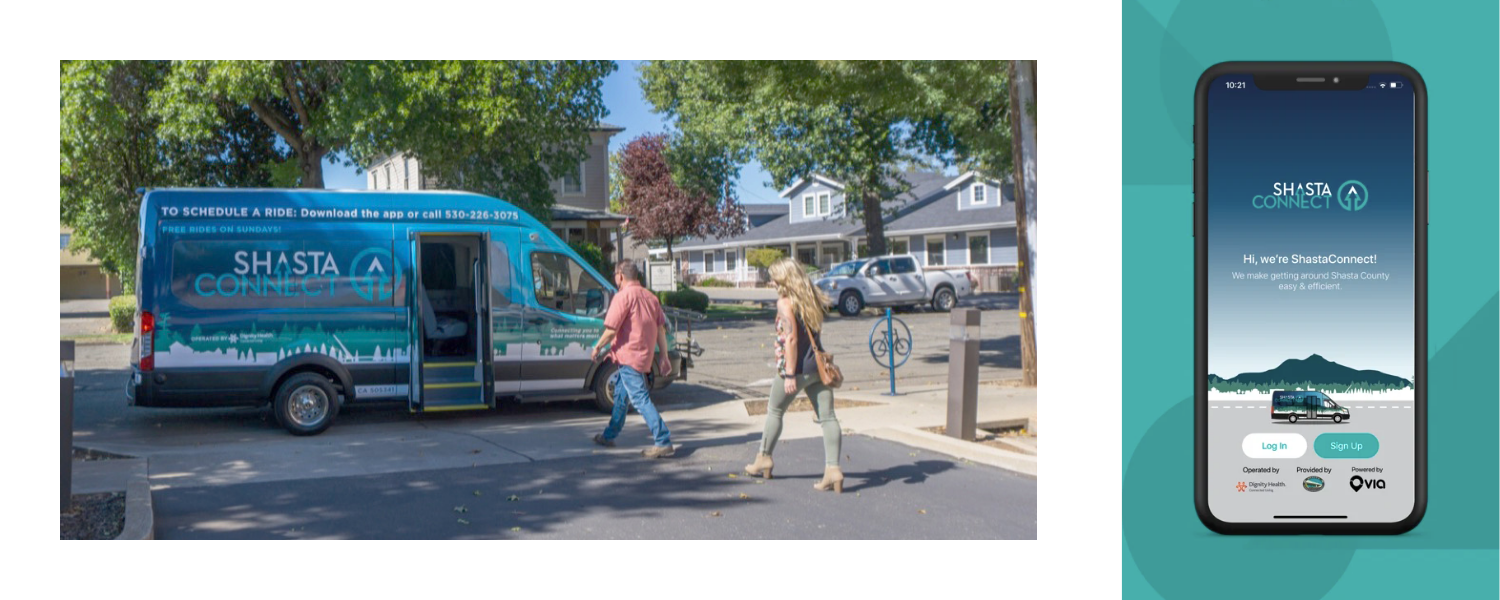 ShastaConnect, a new rural microtransit service in Redding, CA — led by the Shasta Regional Transportation Agency (SRTA) and operated by their CTSA Dignity Health — utilizes a mixture of formula and grant funding. They draw upon LCTOP funding and TDA funds for operations, and they’ve used SGR grants to fund vehicles. Key to securing LCTOP funding is demonstrating the ability for a microtransit service to reduce greenhouse gas emissions, increase ridership, and serve disadvantaged communities.
ShastaConnect, a new rural microtransit service in Redding, CA — led by the Shasta Regional Transportation Agency (SRTA) and operated by their CTSA Dignity Health — utilizes a mixture of formula and grant funding. They draw upon LCTOP funding and TDA funds for operations, and they’ve used SGR grants to fund vehicles. Key to securing LCTOP funding is demonstrating the ability for a microtransit service to reduce greenhouse gas emissions, increase ridership, and serve disadvantaged communities.
Congestion pricing, TNC fees, and tolling.
Some state, regional, and local governments are searching for new ways to raise funds for public transit. In California, LA Metro has commissioned a two-year Congestion Pricing Feasibility Study and Caltrans is running a California Road Charge demonstration to explore a road-use charge program that could, over time, replace traditional fuel taxes. Caltrans is doing this in 4 phases:
- Pay at the pump: demonstrate gas station point-of-sale charging capabilities.
- Usage-based insurance: demonstrate how auto insurance companies could provide road charge account management.
- TNCs: demonstrate the variability of collecting road charge using ridesharing vehicles
- Autonomous Vehicles: demonstrate the ability to collect vehicle and occupancy data from AV's for road use charge purposes.
Elsewhere in the US, notable efforts to raise significant funds for fixing and improving transit include New York State’s congestion fees for taxis and ride hailing vehicles entering Manhattan; New York City's comprehensive congestion pricing; and North Virginia’s I-66 Commuter Choice Program, a dynamic tolling program that provides funding for expanded transit services and access to transit improvements, including microtransit projects.
Non-Emergency Medical Transportation (NEMT) funding.
Microtransit can also serve NEMT trips, as Golden Empire Transit (GET) does in Bakersfield, CA. GET’s On-Demand microtransit service delivers rides to patients on behalf of Kern Family Health Care and its NEMT broker, American Logistics, and is paid for by Medicaid. (Kern Family Health Care delivers health coverage to enrollees in Medi-Cal, California’s Medicaid program, which is funded in part by state and part by federal tax revenue).

Getting local: funding microtransit with ballot measures and partnerships.
Local funding accounts for the majority of transportation funding in the United States — a whopping 62.3%. And that’s no different in California. Local sources include the quarter percent of statewide sales tax, sales taxes from ballot measures, transit fares, and local partnerships. As local funding sources are constantly in flux, microtransit is an attractive option for cities and transit agencies because it’s so flexible; it can be scaled up or down to meet demand and resource constraints.
Here are a few creative ways to raise local funds.
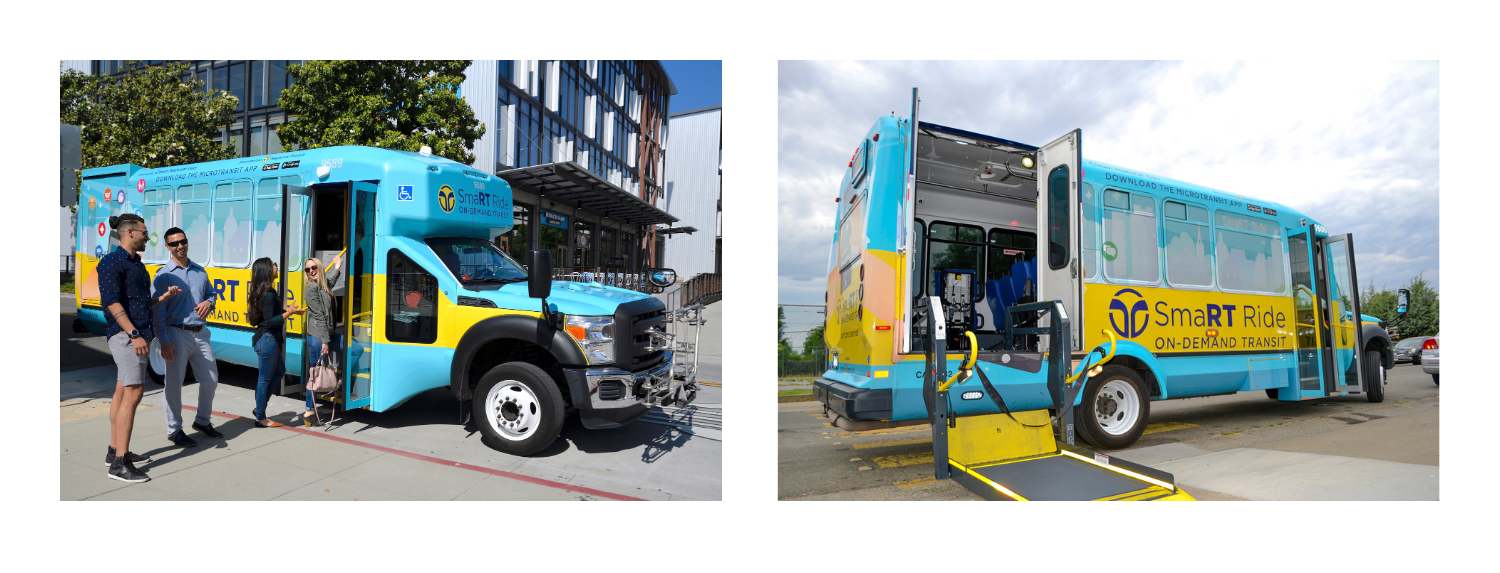
Local sales taxes and ballot measures.
Transit ballot initiatives provide opportunities for local communities to raise dedicated funding for transportation through voter-approved sales or property tax increases. In 2019, over $8B in new transportation funding was approved in elections across 80 ballot measures nationally. The majority of funding is for transit, followed by roads.
SacRT’s SmaRT Ride, the largest on-demand microtransit service in the country, is funded through a local sales tax, approved in a 2004 ballot measure (Measure A) that set aside funds for the Sacramento Transportation Authority to provide $1M per year to fund a neighborhood shuttle program.
LA Metro’s measure M, passed in November 2016, is expected to generate more than $120B over the next 40 years. Measure M was structured to invest this funding into outcomes rather than specific projects. As a result, programs that can achieve reductions in vehicle miles traveled (VMT) qualify for funding, making well-planned microtransit projects an appealing option for investment.
A number of California campaigns for 2020 transit ballot measures planned to include funding allotments for either microtransit or innovative mobility — including in San Diego (ElevateSD), the Bay Area (FASTER), and Sacramento (Measure A). But because of COVID-19, these measures were put on pause as organizers determined that 2020 was not the right time to ask voters to support even a small tax increase.
Elsewhere across the US, voters in Austin overwhelmingly approved Prop A last November, the first transit ballot measure in the nation to specifically fund microtransit. Prop A will enable CapMetro to expand the Pickup service to 15 neighborhoods with $4.5M per year in funding, beginning in 2023.
Local grants.
Similar to grants available at the state level, local grants are often available in order to meet local policy priorities that range from improving air quality to finding cost-effective alternatives to increasing equity.
For instance, the City of Cupertino’s microtransit service, Via-Cupertino, has partially funded their service through a grant from the Bay Area Air Quality Management District (BAAQMD) Pilot Trip Reduction Program. This program enables Bay Area public agencies to demonstrate new, cost-effective, innovative alternatives to fixed-route shuttle service in order to reduce single-occupancy vehicle trips.

Tapping into federal funding to power microtransit.
Despite federal funding accounting for only 16.5% of overall public transit funding in the US, it’s been important in launching several microtransit projects across the country. Federal funding mainly comes in two forms:
- Formula funds. These are typically distributed through the states and eventually trickle down to transit agencies based on area population, existing transit service, and some other factors.
- Competitive grant programs. These are open to agencies, as well as cities and states. The federal government has launched several innovation grant programs aimed at helping transit agencies and cities across the country experiment with new technology.
Los Angeles and Seattle each launched their successful microtransit deployments using federal funds from FTA’s Mobility on Demand (MOD) Sandbox Program. The program was later renamed the Integrated Mobility Program (IMI) and provided $20M to 25 projects in 2020, including microtransit projects in Arlington, Texas, Baldwin County, Georgia, and the Tidewater region of Virginia. For more on using federal funds to fund microtransit, check out this post.
Have other funding ideas we may have missed, or looking for any help with securing funding of your own? Let’s talk!
